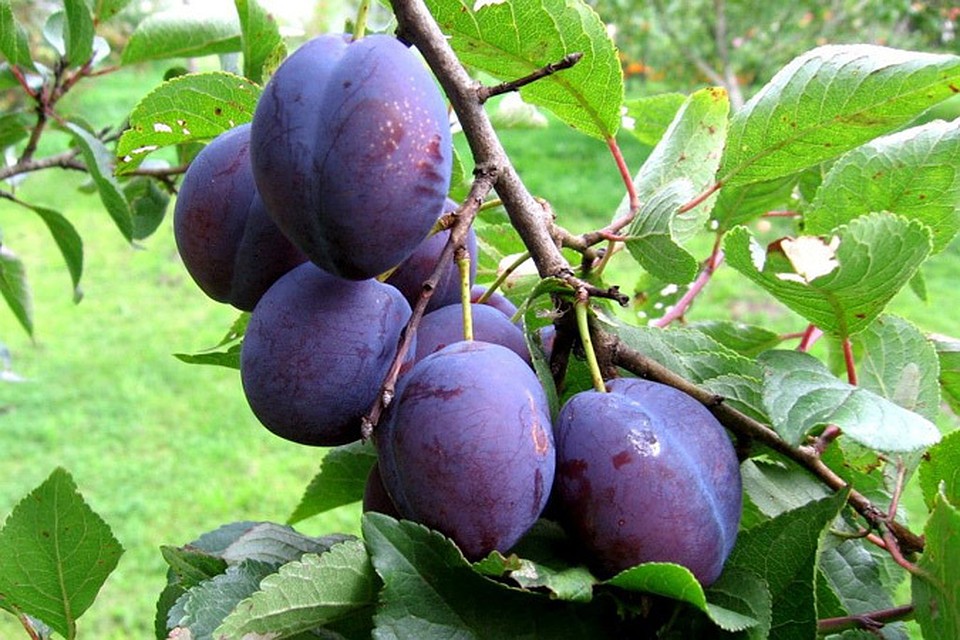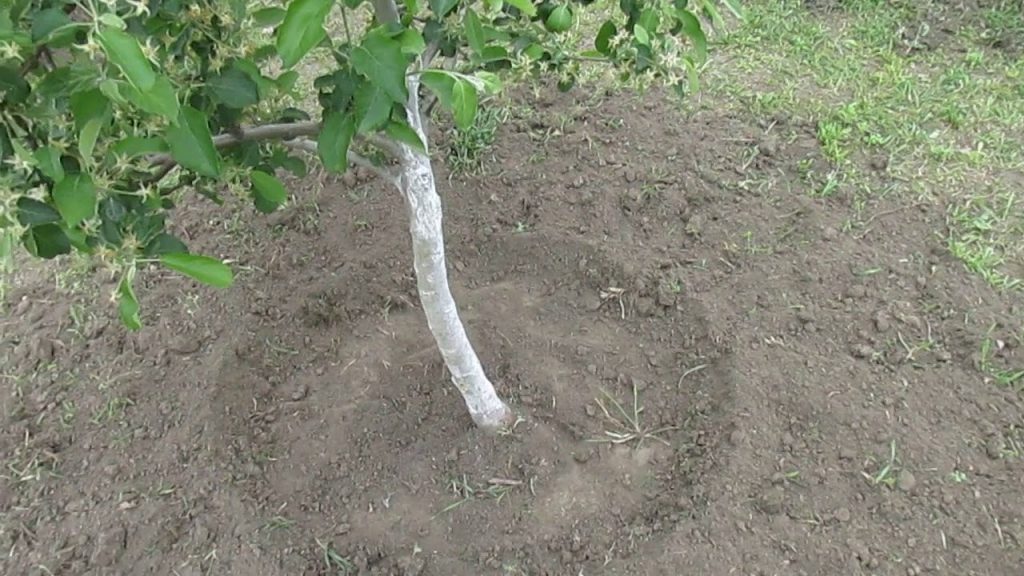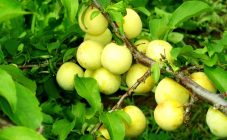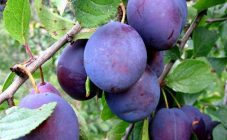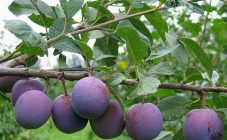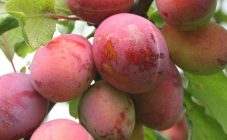Content:
Plums are famous for their unpretentiousness and good yields, so gardeners are trying to expand their range. The hybrid Plum Start, variety description in detail will allow you to find out all its features.
History
This versatile and fairly young variety was created at the VNIIGiSPR named after I.V. Michurin. Plum Startovaya is the result of hybridization of the varieties Volzhskaya Krasavitsa and Eurasia-21. She has incorporated their main advantages: a high level of winter hardiness, large fruits. Plum was bred for the center of the country, so it grows best in the Black Earth region. It is also grown in Belarus, Moldova, Georgia, Ukraine, Estonia.
Characteristics of the Startova plum variety
The starting drain is home grade. Fruiting begins as early as 3-4 years after planting and has a high, stable yield. The yield of plums from 1 hectare is over 60 centners, so this variety is used not only for personal, but also for commercial cultivation.
The tree is rather large and powerful. The crown of the plum is wide, oval, with abundant foliage. The leaves are wide. The shape of a wrinkled leaf plate is characterized by a pointed end and a finely crenate, ribbed edge. Leaf color is emerald green. Early abscission of stipules is characteristic of the Starter plum.
The bark has a reddish tint. Wide, curved shoots are colored brown, closer to burgundy, with a light silvery bloom. Brown, conical buds with pointed ends recede slightly from the stem. The variety is distinguished by a large number of silvery brown lentils. Plum Startovaya has standard, slightly pigmented petioles. Each of them contains 2 amber glands.
Abundant flowering begins in April or May. The flowers of the plum are pure white and large, with a bell-shaped cup. The stigma of the pistil rises above the anthers.
Plum Startovaya is characterized by large fruits, weighing from 45 to 50 g. They have a regular oval one-dimensional shape with a small depression at the base. Plums are covered with a dense skin of medium thickness. The color of the fruit is purple with a characteristic waxy bloom giving it a violet-bluish tint. There are no "freckles" under the skin. Due to the properties of the plum peel, it is transportable, does not deform and does not damage even when transported over long distances.
The variety has an amber-colored pulp, sweet and juicy, with a slight acidity. The sugar content is 8.5%. Fruits are distinguished by abundant discharge of watery, colorless plum juice. The elongated bone comes out of the pulp without difficulty.
Ripe fruits do not fall off on their own, while easily separating from the peduncle. Sliva Startova was given a high tasting rating on an expert scale - 4.7 out of 5.
Plum Starter is a versatile homemade variety. It can be used directly from the tree, as well as in the form of blanks. Frozen plum is used to decorate cakes, ice cream and other products.
Reproduction
Plum Startovaya is easily propagated by grafting or using a stone.The washed seeds are kept soaked in warm water for 72 to 120 hours. This requires a daily change of water, as well as mixing the seeds. The dried seeds are stored in a glass container.
6 months before planting, the seeds must be awakened from sleep, stratified. They are mixed with wet sand and kept at a temperature of –10 to +1 degrees. A tree made of stone is capable of bearing fruit in the 6th year, when planted by means of a cuttings - in the 3-4th year.
Plum planting Start
A temperate continental climate is suitable for the Startovaya plum. In warm, sunny weather, the sweetness of the fruit increases. Therefore, the landing site should be well-lit, protected from the winds.
Loamy soil with a neutral reaction is suitable for the variety. To prevent the roots from getting wet, they choose a place with a groundwater level no closer than 2 m to the surface. Plums are planted in spring in April, and in autumn in October, until frosts begin. After 2 years, the stalk reaches the size of a seedling and, if desired, can be transplanted to another place.
A couple of weeks before planting the plum, a place is cleared and a pit is made 60x60x60 cm in size.The excavated earth is not removed, but mixed with rotted horse manure (2 buckets), ammophoska (200 g) is added to the mixture. The resulting mixture is poured into the pit with a slide, in the center of which a peg is fixed. A plum sapling is set in the center of the top of the hill, the roots are carefully straightened. Do not add strong fertilizers, as the roots of the tree may get burned.
Filling with soil is done so that the root collar remains uncovered at a distance of about 5–7 cm above the surface. It remains to tie the plum sapling to the support using soft material, trample the soil and water. Elementary watering is 4 buckets of warm, settled water. After that, the zone of the near-stem circle is mulched with a layer of peat or compost.
Growing and care
You need to take care of the plum according to the same principle as for other fruit trees. She needs loosening, weeding, mulching, watering, feeding, pruning. To increase the yield of the variety next year, 80% of the young plum flowers are removed.
Barrel circle
The trunk circle at the plum is about 2 m and requires careful care. Regular loosening, weeding is necessary. In addition, it is recommended to remove root growth, as it depletes the strength of the tree. Removal should be done at least 4-5 times during the summer.
Watering
Watering intensity: 3 to 5 times during the spring-summer period. For 1 sq. 3-4 buckets of water should go away. The most important periods for watering plums: after flowering, active formation and growth of ovaries, after the end of the formation of a stone in the fruit To keep moisture in the soil longer, watering is completed with mulching. For this, dry earth, wood chips, straw, pieces of cardboard are used.
Top dressing
Top dressing of Startovaya plum is carried out three times a year: in mid-spring, in summer and after harvesting in autumn. Regular feeding of plums with mineral and organic fertilizers begins 2 years after planting. The tree should receive organic additives at intervals of a year; in intermediate years, mineral fertilizers can be added:
- 10 days before flowering, in April, add about 20 g of urea per 1 sq. m;
- after flowering, in May, the plum is fed with 20 g of double superphosphate, 15 g of urea, 30 g of potassium sulfate per 1 sq. m.
Organic feeding:
- 1 part slurry diluted with 3-5 parts water;
- an aqueous solution of poultry manure in a ratio of 1:10.
Spring feeding: 80 g of urea, 200 g of potassium sulfate, 200-300 g of superphosphate per 10 liters of water. It is worth considering the weather conditions by adjusting the frequency of top dressing. Cold, cloudy weather slows down the absorption of nutrients by the plum.
Pruning
Pruning is a must for plum trees to create the conditions for the tree to develop properly.The plum needs a sanitary, formative pruning that removes twisted, inward growing and dry branches. Last year's gains are shortened by one third. Crown formation begins in the 2nd year of the tree's life, making it medium thickened. When the height of the tree reaches 2.5 m, bend the central conductor towards the east, fixing it with a garter to the underlying branch.
Strengthening the branches
With a high yield, plum branches are strengthened with props. To prevent gum leakage, place a soft material where the bark meets the support.
Preparing for winter
Pre-winter pruning consists in shortening long branches by a third, removing damaged branches.
The tree also tolerates the hot summer period perfectly.
Diseases and pests
The variety has excellent disease and pest resistance, so you don't have to worry about additional protective measures.
Advantages and disadvantages of the variety
Characteristic variety indicates its many advantages:
- high degree of frost resistance, allowing the drain to endure even harsh winter conditions;
- very early ripening period;
- high productivity;
- resistance to most diseases and fungal infections;
- good transportability;
- excellent taste.
The disadvantage of the variety is its short shelf life - up to 25 days in a cool room. The self-infertility of the Start Plum can also be attributed to a disadvantage, since for it pollination it is necessary to plant simultaneously flowering compatible pollinating varieties.
The plum's popularity is justified by its many positive qualities. Summer residents call this variety ideal for its unpretentiousness, early maturity and high yield, which is not influenced by either climate or weather conditions.

